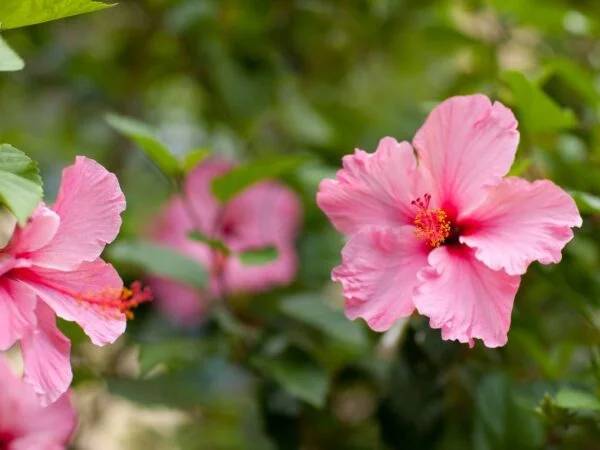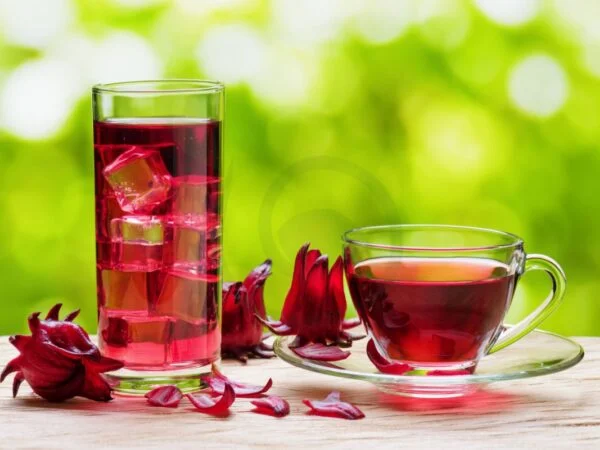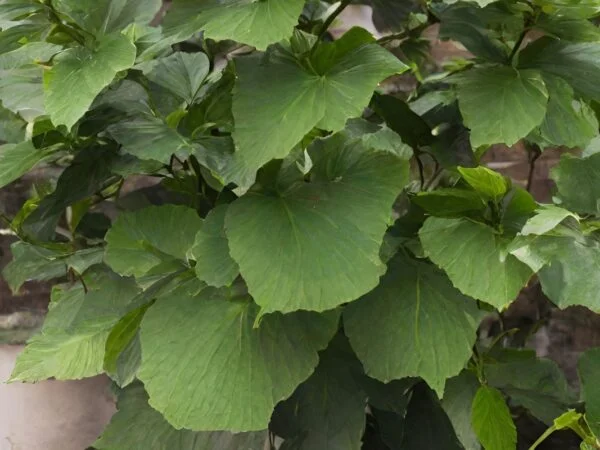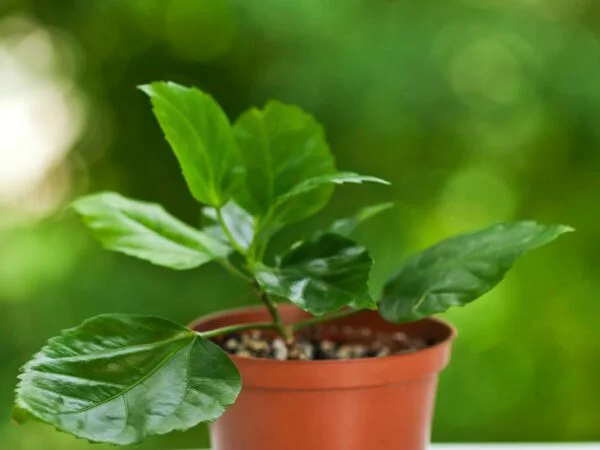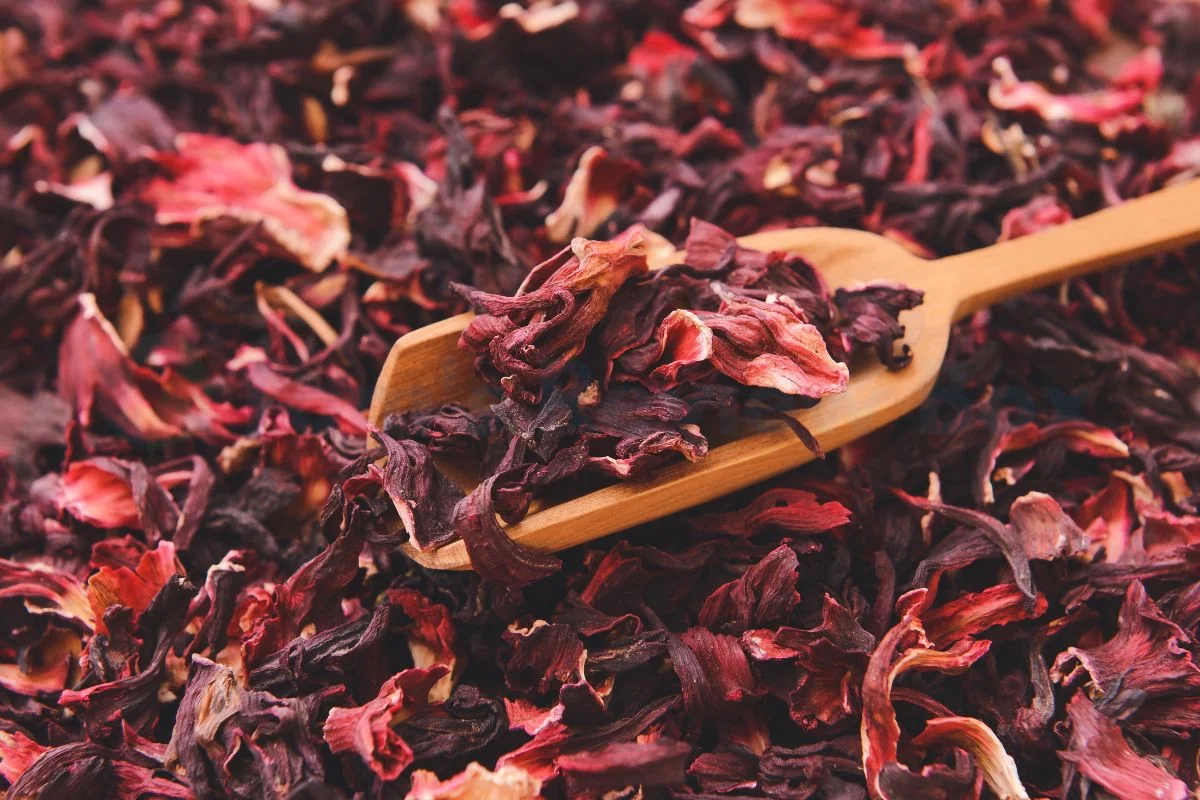
Looking to dry hibiscus flowers? We've got you covered! Whether you want to preserve them for teas or crafts, we'll guide you through the process step by step.
Key Takeaways
- Understand the process of drying hibiscus to preserve its benefits and flavors.
- Harvest hibiscus flowers at the right time for optimal drying results.
- Prepare hibiscus flowers by removing excess moisture before drying.
- Choose from various drying methods like air drying, oven drying, or dehydrator drying based on your preference.
- Store dried hibiscus properly in airtight containers away from light and moisture to maintain freshness.
- Explore creative uses of dried hibiscus in teas, culinary dishes, potpourri, and homemade skincare products.
Understanding Hibiscus
Types
Hibiscus flowers come in various types such as rosa-sinensis, sabdariffa, and syriacus. Each type offers distinct characteristics and flavors. Rosa-sinensis, known for its vibrant colors, adds a tropical touch to dishes. Sabdariffa, with its tartness, is perfect for teas. Syriacus, also called rose of Sharon, boasts a mild flavor ideal for blending.
When drying hibiscus flowers, consider the type as it impacts the overall process by using water or silica gel. Rosa-sinensis petals dry quickly due to their thin texture. Sabdariffa calyces require longer drying periods to preserve their tanginess. Syriacus flowers need gentle handling during drying to maintain their delicate taste.
Benefits
Consuming dried hibiscus flowers offers numerous health benefits like lowering blood pressure and aiding in digestion. Beauty-wise, these flowers can enhance skin health due to their antioxidant properties. Incorporating dried hibiscus into daily routines promotes overall well-being through its anti-inflammatory and immune-boosting effects.
Using dried hibiscus flowers in culinary creations not only adds a unique flavor but also provides essential nutrients like Vitamin C and antioxidants. Brewing hibiscus flower tea involves steeping dried petals in hot water for a refreshing beverage rich in vitamins and minerals. Beyond tea, dried hibiscus flowers can be used in jams, syrups, or even salads for a burst of color and flavor.
Usage
In culinary dishes, dried hibiscus flowers can be incorporated into recipes for desserts like cakes or cookies to infuse a floral essence. To brew hibiscus tea, simply steep dried flower petals in boiling water for several minutes before straining and enjoying the vibrant red drink. Apart from tea and food, dried hibiscus flowers can be used to create potpourri or even in homemade skincare products for added benefits.
Harvesting Hibiscus
Best Time
The best time to dry hibiscus flowers in sunlight is early in the morning or late in the afternoon. These times offer gentle sunlight, preserving the flower's vibrant color and essential oils. During these periods, the sun's rays are not too harsh, preventing damage to the delicate petals.
Certain times of the year, such as late spring or early summer, are more suitable for drying hibiscus flowers. This period typically coincides with the peak blooming season of hibiscus plants, ensuring an abundance of fresh flowers for harvesting. The flowers are at their prime during this time, guaranteeing optimal flavor and aroma when dried.
When harvesting hibiscus flowers for drying, it is crucial to choose blooms that are fully open and free from any signs of wilting or damage. Select flowers with vibrant colors and firm petals to ensure a high-quality end product. Pluck the flowers carefully, avoiding any bruising or tearing of the petals to maintain their visual appeal.
Techniques
There are three main techniques for drying hibiscus flowers: air drying, oven drying, and dehydrator drying. Air drying involves hanging fresh hibiscus flowers upside down in a warm, well-ventilated area until they are completely dried. This method is simple and cost-effective but may take longer compared to other techniques.
Oven drying offers a quicker alternative by placing fresh hibiscus flowers on a baking sheet and drying them at low temperatures. This method speeds up the drying process but requires careful monitoring to prevent overheating and potential damage to the flowers' delicate petals. On the other hand, dehydrator drying provides consistent heat distribution, resulting in evenly dried flower petals within a shorter timeframe.
Advantages:
- Air Drying: Cost-effective and simple method.
- Oven Drying: Quick drying process.
- Dehydrator Drying: Even heat distribution for uniform results.
Disadvantages:
- Air Drying: Longer drying time.
- Oven Drying: Requires careful monitoring.
- Dehydrator Drying: Equipment dependency for faster results.
Preparing for Drying
Cleaning
Cleaning hibiscus flowers before drying is crucial to ensure a high-quality end product. Removing dirt, insects, and debris helps prevent contamination during the drying process. To clean hibiscus flowers, gently rinse them under cold water to remove any visible impurities. It's important not to use soap or harsh chemicals on the flower as they can affect the flavor and quality of the dried hibiscus.
When cleaning hibiscus flowers, avoid using hot water as it can cause the petals to wilt prematurely. Make sure to pat the flowers dry with a clean cloth or paper towel before proceeding with the drying process. One common mistake to avoid is washing the flowers too vigorously, which can damage the delicate petals and affect the final dried product's appearance and taste.
Sorting
ting hibiscus flowers involves selecting only the best-quality blooms for drying. Look for flowers that are fully bloomed, vibrant in color, and free from any signs of wilting or browning. Discard any damaged or discolored flowers as they can negatively impact the overall flavor and appearance of the dried hibiscus.
The criteria for selecting high-quality hibiscus flowers include inspecting each bloom carefully for freshness and uniformity in size. Sorting plays a significant role in determining the final quality of the dried hibiscus, ensuring a visually appealing and flavorful end product. By carefully sorting through the flowers before drying, you can enhance the overall experience of using dried hibiscus in various culinary applications.
Drying Methods Overview
Air Drying
Air-drying hibiscus flowers is a simple process. First, gather the flowers in small bunches and tie them with string. Next, hang the bundles upside down in a warm, dry area away from direct sunlight. This method preserves the color and flavor of the flowers well.
Benefits:
- Retains natural colors and flavors.
- Requires minimal equipment.
- Cost-effective compared to other methods.
For successful air drying, ensure good air circulation around the flowers. Avoid humid areas to prevent mold growth. Check the flowers regularly for any signs of mold or moisture.
Oven Drying
When oven drying hibiscus flower, preheat it to 150°F (65°C). Spread the flowers on a baking sheet in a single layer. Bake for about 1-2 hours until they are crispy to touch but not burnt.
Optimal duration: 1-2 hours at low heat. Safety precautions:
- Monitor closely to prevent burning.
- Keep children away from the hot oven.
- Use oven mitts when handling hot trays.
Dehydrator Drying
Using a dehydrator for drying hibiscus is efficient. Set the dehydrator temperature to 100°F (38°C). Place the flowers on the trays in a single layer without overlapping them.
Advantages of dehydrator drying:
- Faster drying process.
- Maintains essential oils and nutrients better than other methods.
For best results, rotate the trays halfway through drying. Ensure that the hibiscus petals are completely dry before storing them.
Air Drying Technique
Steps
Hanging
- Hang hibiscus flowers upside down in a warm, dry area with good air circulation.
- This method helps preserve color and shape while allowing moisture to evaporate efficiently.
- Choose a location away from direct sunlight to prevent the flowers from fading too quickly.
Tray Method
- Utilize trays lined with parchment paper to lay out hibiscus flowers in a single layer.
- Placing the flowers on trays enables even airflow, aiding in the drying process.
- Ensure proper spacing between flowers on the tray to prevent them from sticking together.
Tips
- Avoid drying hibiscus flowers in areas with high humidity to prevent mold growth.
- If the petals become brittle during drying, lightly mist them with water to rehydrate.
- Store dried hibiscus flowers in an airtight container away from sunlight for long-lasting freshness.
Oven Drying Technique
Steps
Temperature Setting
Maintaining the right temperature is crucial for drying hibiscus flowers effectively. For oven drying, set the temperature between 100-110°F to preserve color and flavor. Higher temperatures can lead to loss of quality.
When oven-drying hibiscus, ensure the temperature settings are consistent throughout the process. Any fluctuations can impact the flowers' quality and texture. Low temperatures may result in longer drying times.
Varying temperatures during drying can affect the final product. Too high a temperature can cause browning and loss of flavor, while low temperatures might not dry the flowers adequately.
Checking Dryness
To determine if hibiscus flowers are dry, gently touch them. They should feel crisp and brittle when fully dried. Visually inspect the petals for any remaining moisture.
A simple test to check dryness is to crush a flower between your fingers. If it crumbles easily, it's ready. Wet or soft petals indicate that further drying is needed.
Under-dried hibiscus flowers can develop mold, affecting their quality and safety. On the other hand, over-dried flowers may lose their vibrant color and essential oils.
Tips
- When transitioning from air drying to oven drying, ensure proper temperature adjustment.
- Place a thermometer inside the oven to monitor and maintain the desired temperature accurately.
- Rotate the baking trays halfway through the drying process for even airflow and consistent results.
Dehydrator Drying Technique
Steps
To dry hibiscus using a dehydrator, start by preparing the flowers by removing the stems and separating the petals. Next, spread the petals evenly on the dehydrator trays, ensuring they are not overlapping. Then, set the temperature based on the guidelines for drying hibiscus.
Temperature Setting
For optimal results, set the dehydrator to a low temperature range between 95°F to 110°F. This gentle heat helps preserve the color and flavor of the hibiscus flowers during the drying process. Avoid using high temperatures as they can degrade the quality of the dried flowers.
Time Duration
The duration of drying is crucial for achieving high-quality dried hibiscus flowers. The ideal time varies depending on the method used, but typically ranges from 4 to 8 hours in a dehydrator. Longer drying times can lead to a loss of flavor and aroma, while shorter durations may result in incomplete drying.
Tips
- To ensure even drying, rotate the trays halfway through the drying process.
- Check the progress periodically to prevent over-drying, which can make the flowers brittle.
- Store dried hibiscus flowers in an airtight container away from light and moisture to maintain their freshness and flavor.
Storing Dried Hibiscus
Containers
When storing dried hibiscus flowers, opt for glass jars or airtight containers to maintain freshness. Ensure the containers are clean and dry before transferring the flowers. To enhance longevity, store in a cool, dark place away from sunlight.
Consider using mason jars with tight lids or glass containers with rubber seals for optimal preservation. Properly sealed containers prevent moisture and air exposure, preserving the flavor and color of dried hibiscus. Airtight storage is essential for retaining the quality of the flowers over time.
Using plastic bags is discouraged as they may not provide sufficient protection against moisture. The goal is to keep dried hibiscus flowers dry and free from humidity to prevent mold growth. By choosing the right container, you can enjoy flavorful hibiscus tea for an extended period.
Location
Ideal storage locations for dried hibiscus flowers include pantry shelves or kitchen cabinets away from heat sources. Avoid storing near stoves or ovens to prevent exposure to heat, which can degrade the quality of the flowers. Select a spot with consistent temperature and low humidity levels.
Environmental factors like light exposure and temperature fluctuations can impact the freshness of dried hibiscus flowers. Aim for a storage location that is cool, dark, and dry to maintain the aroma and taste of the flowers. Keep them away from direct sunlight to prevent color fading.
Choosing a suitable location ensures that dried hibiscus flowers retain their flavor and nutrients. Consider storing them in a place with good air circulation to prevent moisture buildup, which can lead to spoilage. With proper storage conditions, you can enjoy aromatic hibiscus tea whenever you desire.
Shelf Life
Properly dried hibiscus flowers typically have a shelf life of up to one year when stored correctly. Factors such as humidity levels, light exposure, and temperature variations can affect their longevity. To extend shelf life, ensure they are stored in airtight containers in a cool, dark place.
Uses of Dried Hibiscus
Culinary Uses
Dried hibiscus flowers offer a unique tangy flavor, making them a versatile ingredient in various culinary creations. Their vibrant color and tartness are perfect for enhancing both sweet and savory dishes. Incorporate dried hibiscus flowers in teas, jams, syrups, or even as a garnish on salads for a pop of color and taste.
- Enhances Flavor: Dried hibiscus flowers add a delightful tanginess to beverages like teas and cocktails.
- Versatile Ingredient: Use dried hibiscus flowers in desserts such as sorbets, ice creams, or baked goods for a floral twist.
- Colorful Garnish: Sprinkle dried hibiscus petals on yogurt, oatmeal, or cakes to elevate the visual appeal of your dishes.
Experiment with recipes like hibiscus-infused lemonade, hibiscus tea blends with mint or ginger, or hibiscus-flavored sauces for meat dishes to explore the diverse culinary possibilities that dried hibiscus offers.
Health Benefits
Consuming dried hibiscus flowers not only delights the taste buds but also provides numerous health benefits. Rich in antioxidants, these flowers can help lower blood pressure and cholesterol levels. The nutritional value of dried hibiscus includes vitamins C and A, iron, and fiber.
- Antioxidant Powerhouse: Dried hibiscus flowers are packed with antioxidants that combat free radicals in the body.
- Heart Health: Regular consumption of hibiscus tea made from dried flowers may aid in lowering blood pressure naturally.
- Nutrient-Rich: The high vitamin C content supports immunity while iron promotes healthy blood circulation.
Incorporate dried hibiscus flowers into your diet through teas, infusions, or as an ingredient in salads and desserts to harness their potential health benefits.
Beauty Applications
Harnessing the beauty benefits of dried hibiscus flowers can revitalize your skincare routine. These flowers are known for their skin-loving properties that promote youthful-looking skin and luscious hair. DIY beauty recipes using dried hibiscus can include face masks, hair rinses, or infused oils.
- Skin Rejuvenation: Hibiscus contains natural alpha hydroxy acids that exfoliate skin gently for a radiant complexion.
- Hair Nourishment: Hibiscus-infused hair treatments can strengthen hair follicles and promote hair growth.
- Anti-Aging Properties: The antioxidants in dried hibiscus help combat signs of aging like wrinkles and fine lines.
Experience the nourishing effects of dried hibiscus by incorporating it into your skincare regimen to achieve glowing skin and healthy hair naturally.
Final Remarks
You've now mastered the art of drying hibiscus! Understanding the plant, harvesting, and different drying techniques have equipped you with the knowledge to create your dried hibiscus stash. Remember to store it properly to preserve its freshness and potency for all your culinary and wellness needs. Experiment with teas, potpourris, or even skincare recipes using your homemade dried hibiscus - the possibilities are endless!
Take action today by trying out one of the drying methods discussed and share your experience with others. Your journey into the world of drying hibiscus not only adds a flavorful touch to your dishes but also elevates your self-sufficiency in creating natural products. Embrace this newfound skill and enjoy the benefits of having dried hibiscus at your fingertips. Happy drying!
Frequently Asked Questions
How can I dry hibiscus flowers at home?
To dry hibiscus flowers at home, follow these steps:
- Harvest fresh hibiscus flowers.
- Remove the petals from the calyx.
- Choose a drying method (air drying, oven drying, or dehydrator).
- Spread the petals in a single layer.
- Check for dryness before storing.
Can I use a microwave to dry hibiscus flowers quickly?
No, it is not recommended to use a microwave to dry hibiscus flowers as it may cause uneven drying and affect the quality of the petals. Stick to traditional methods like air drying, oven drying, or using a dehydrator for best results.
How long does it take to air dry hibiscus flowers?
Air drying hibiscus flowers typically takes about 1-2 weeks, depending on humidity levels in your area. Ensure good air circulation and avoid direct sunlight to prevent mold growth during the drying process.
What are the benefits of using dried hibiscus flowers?
Dried hibiscus flowers have various uses and benefits:
- Rich in antioxidants
- Used in teas, culinary dishes, and potpourri
- Adds color and flavor to beverages
- Supports digestive health
- Contains vitamin C and minerals like iron
How should I store dried hibiscus flowers for long-term use?
To store dried hibiscus flowers for long-term use:
- Place them in an airtight container.
- Store in a cool, dark place away from sunlight.
- Label with date and contents for easy identification.
- Use within 6-12 months for optimal freshness and flavor retention.
Image Source: Paid image from CANVA

